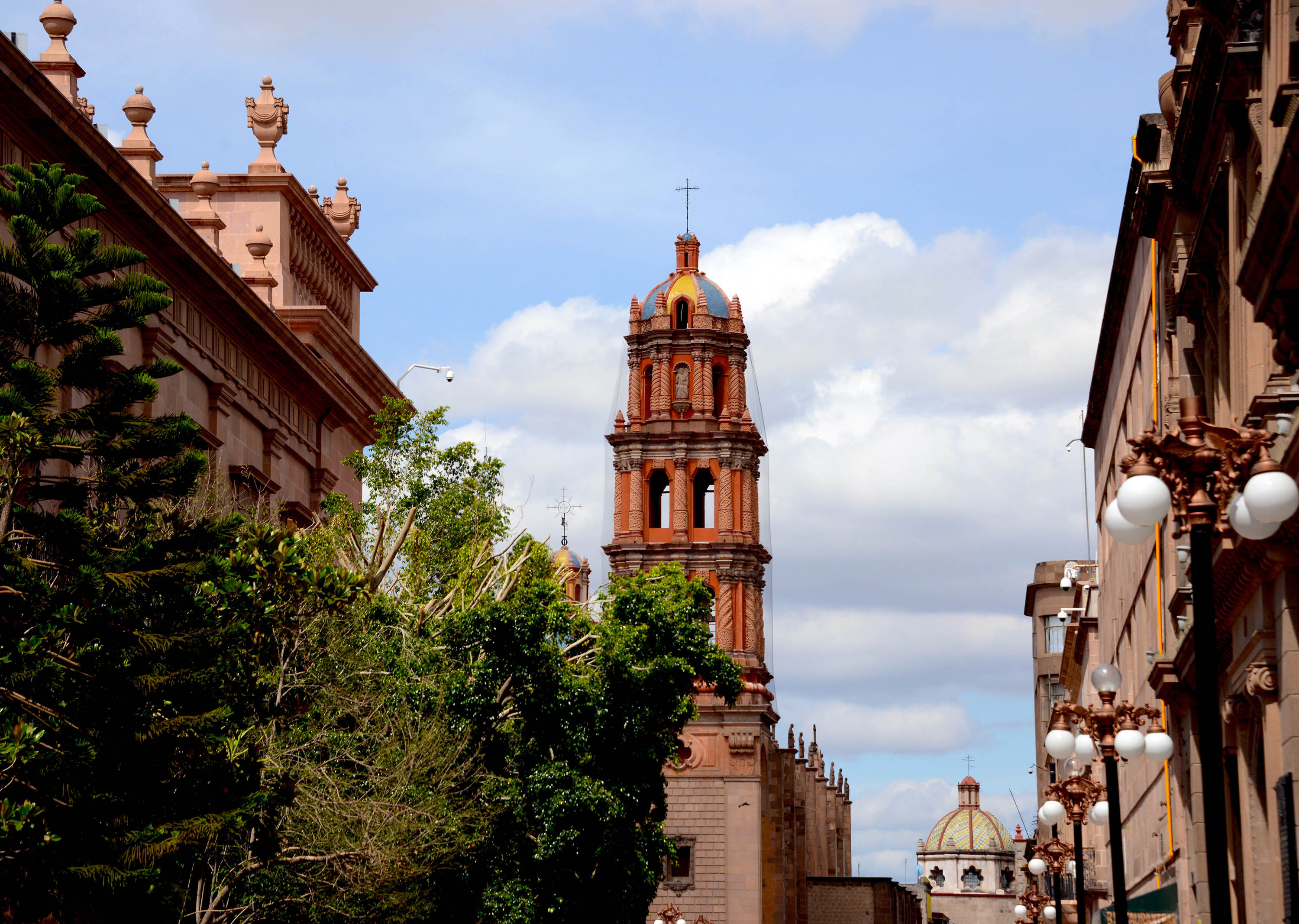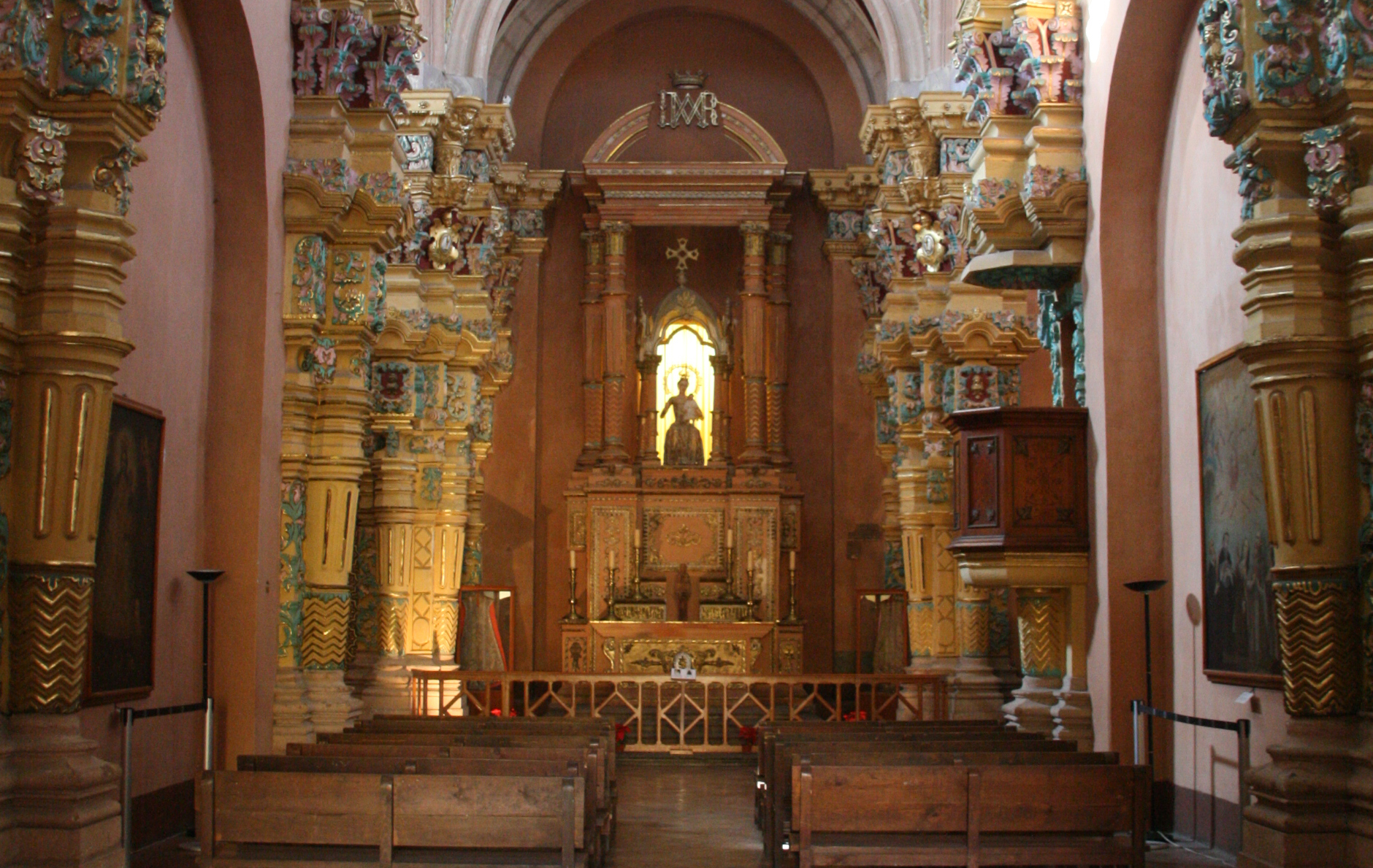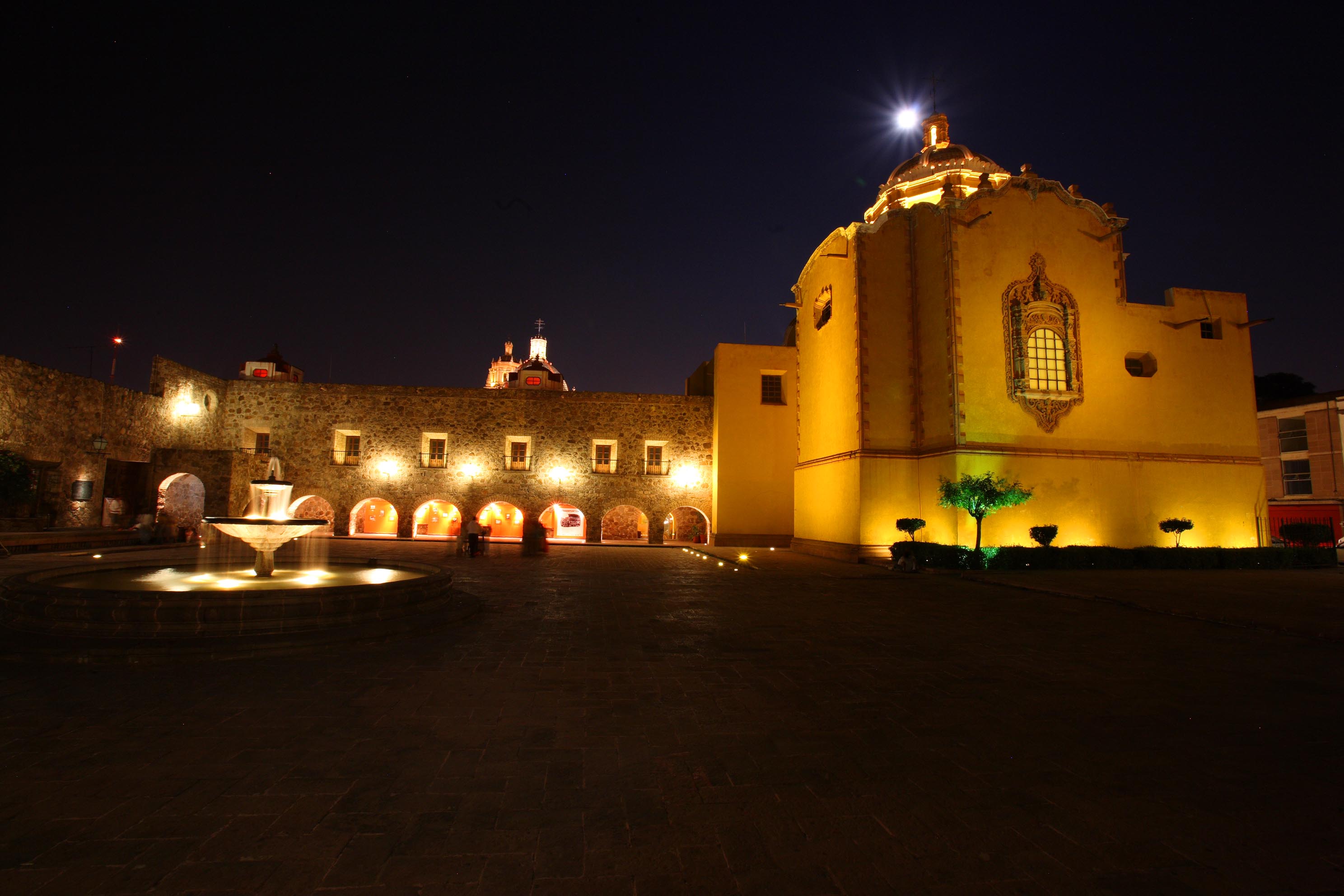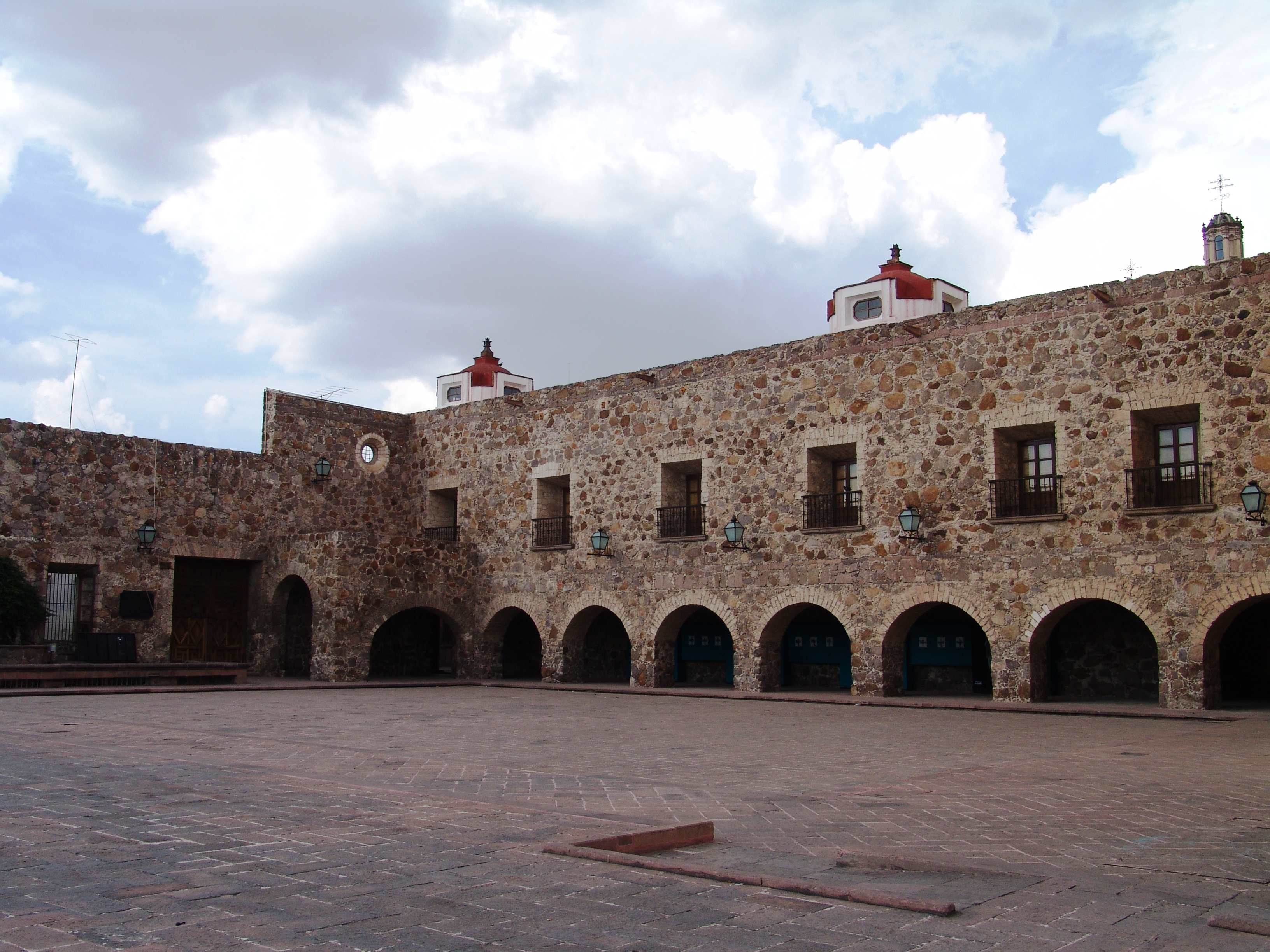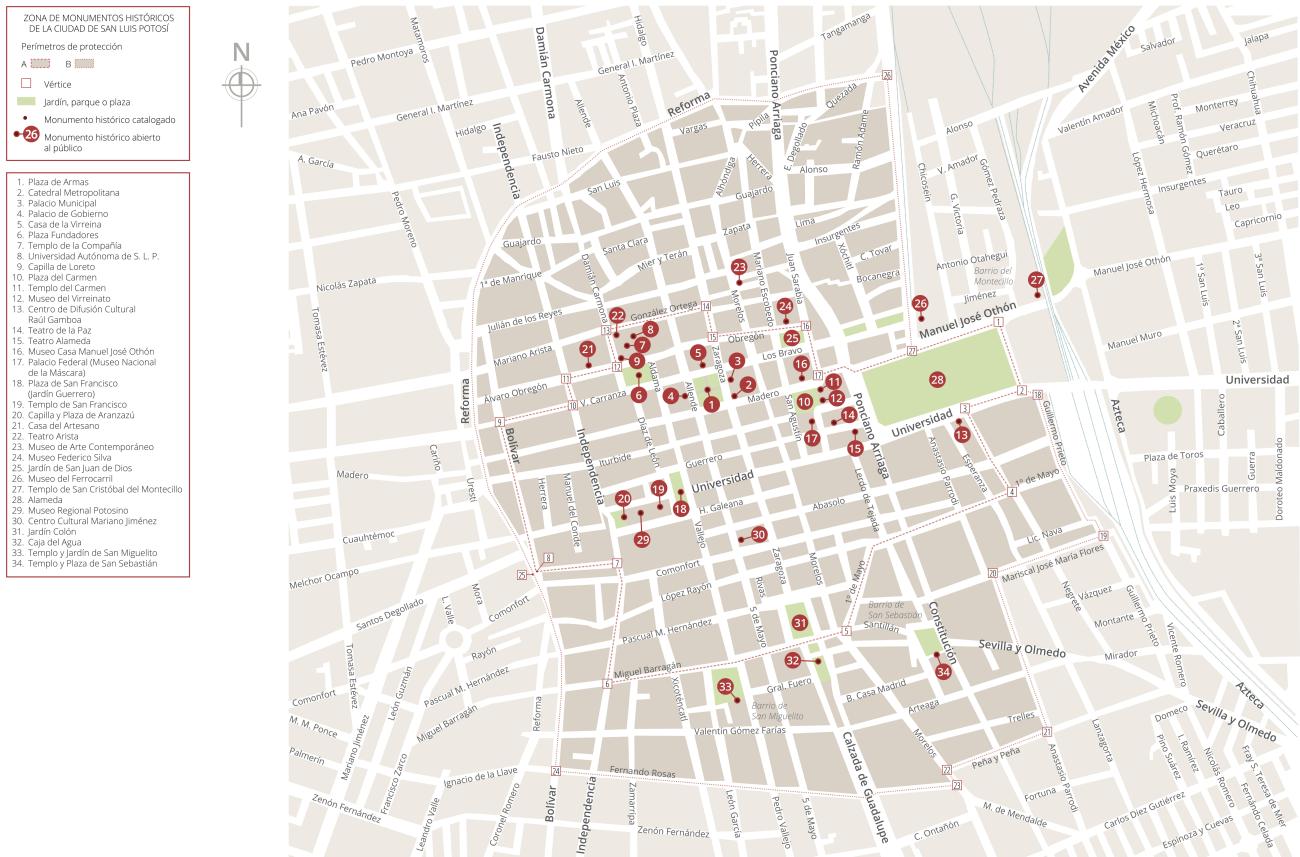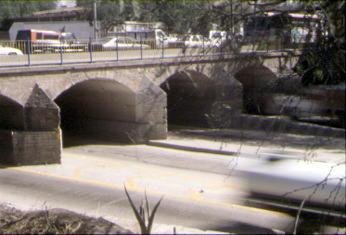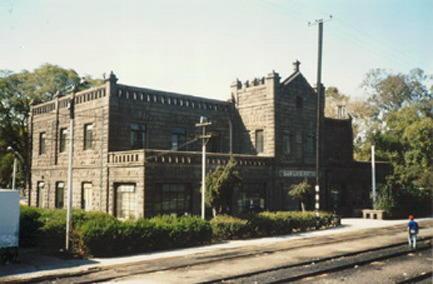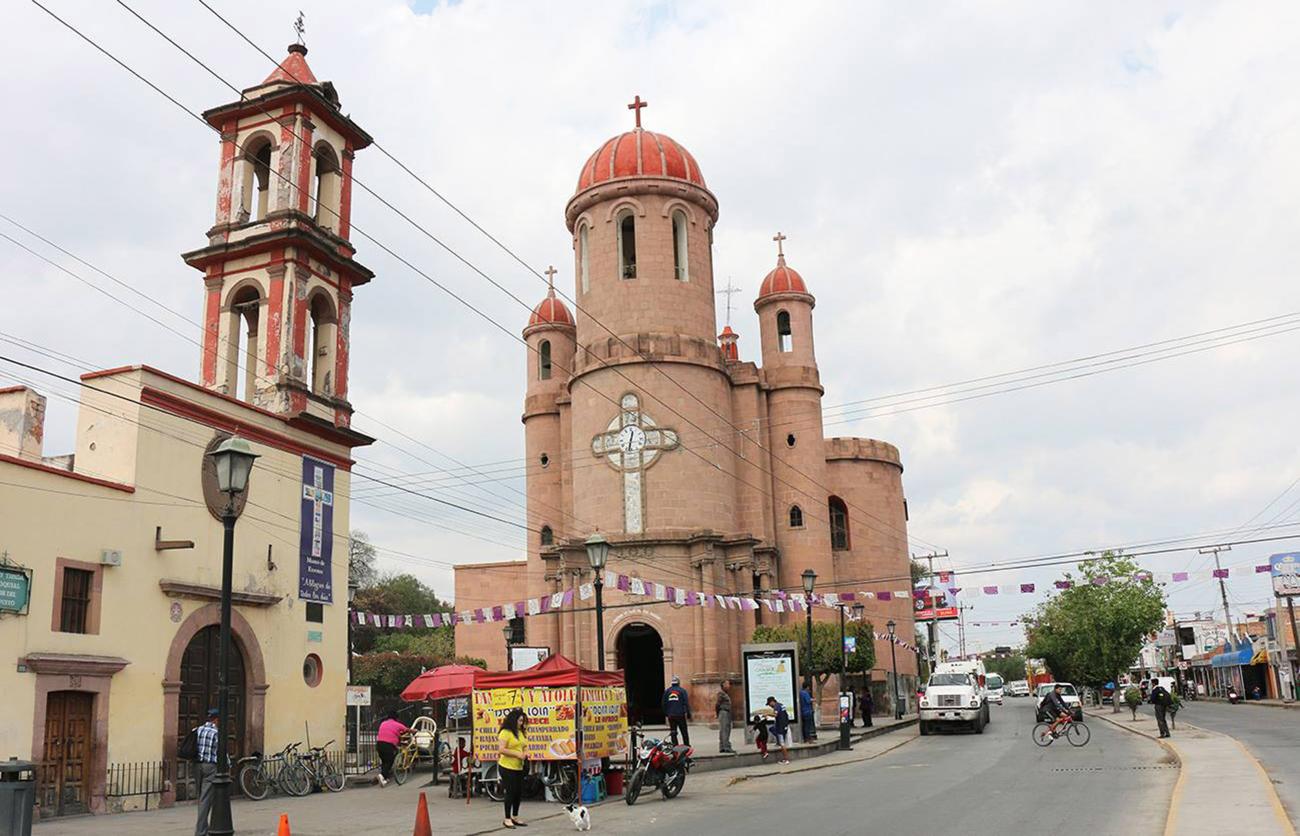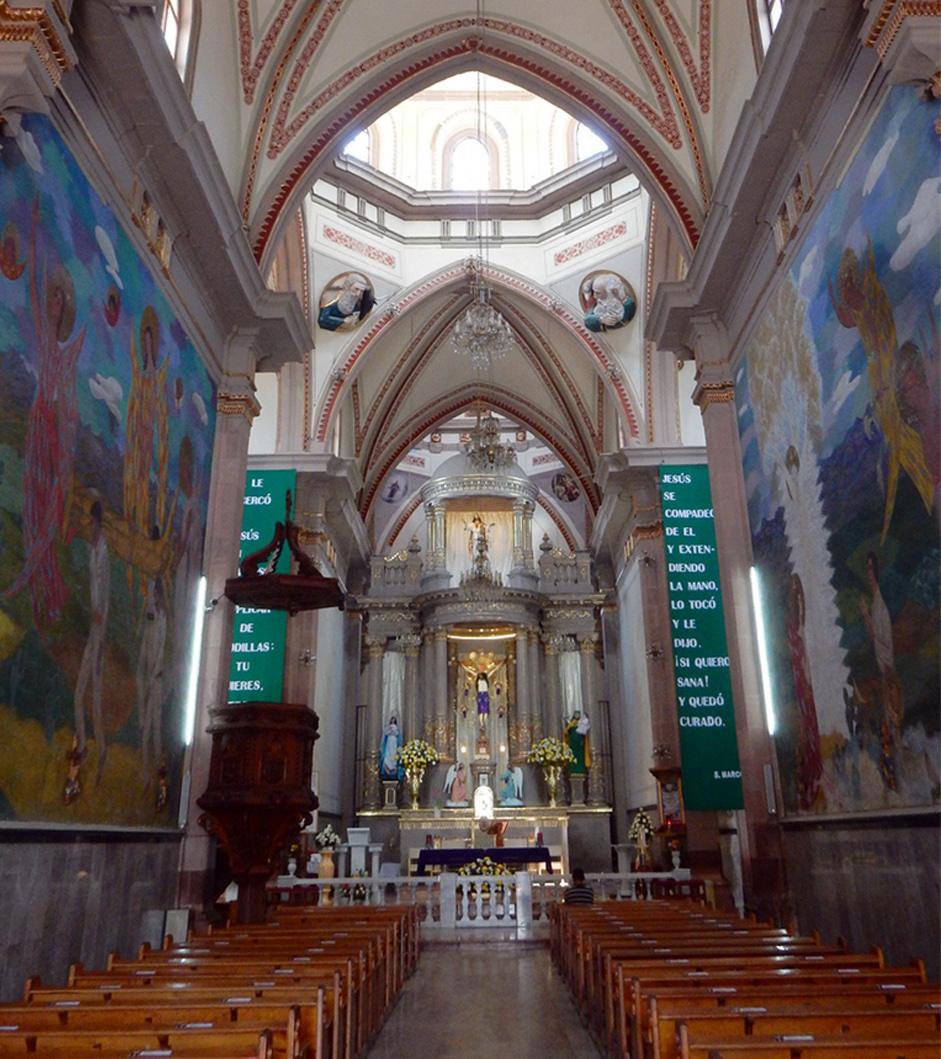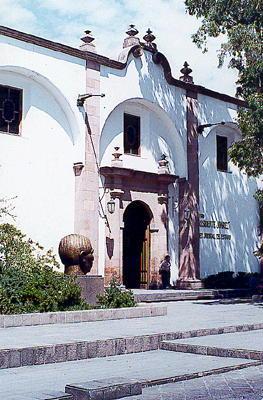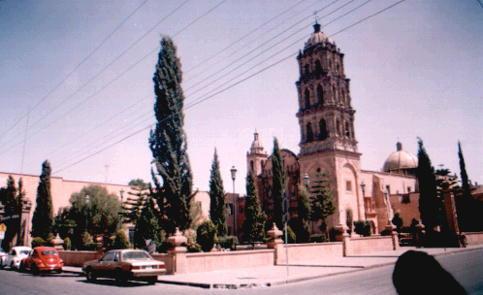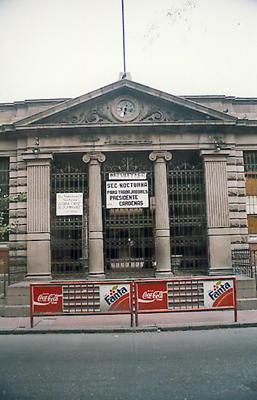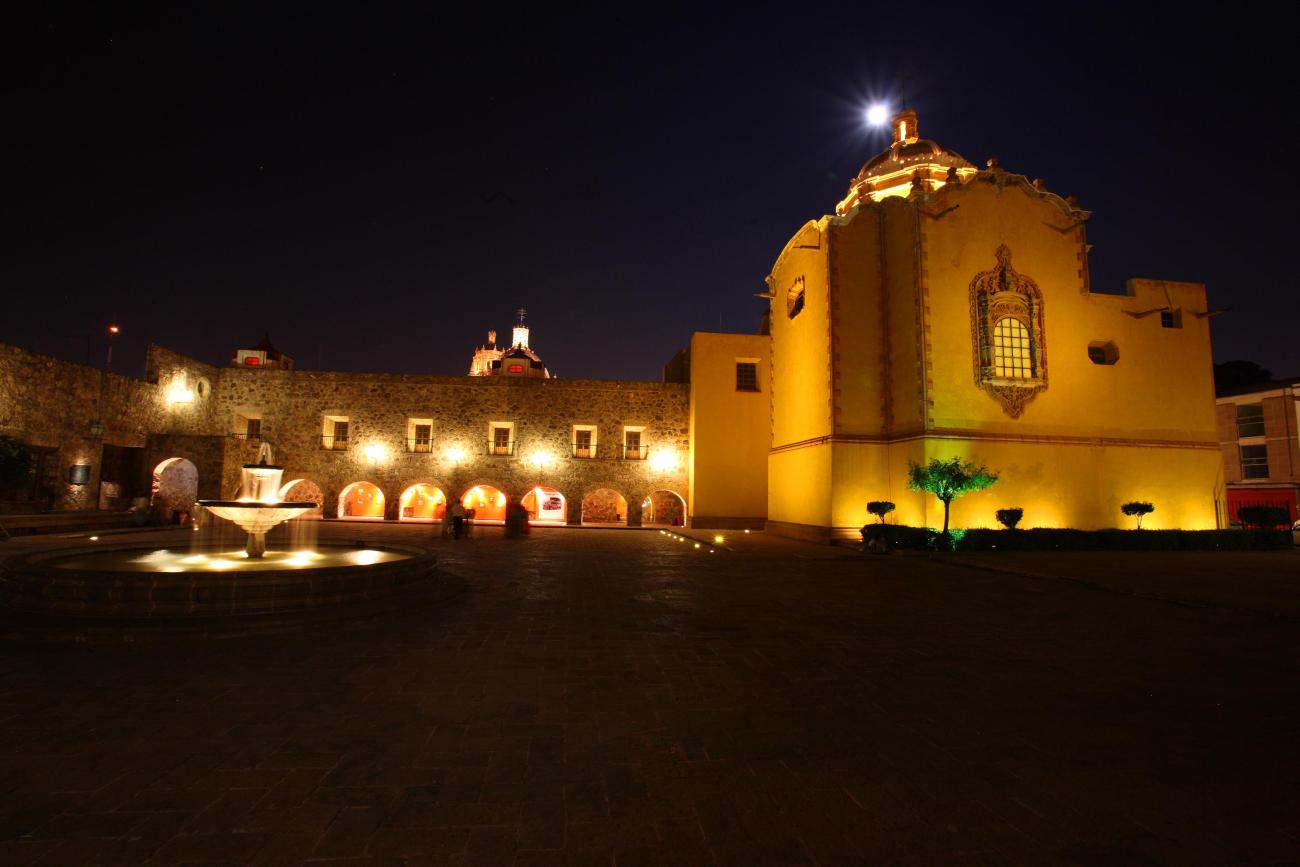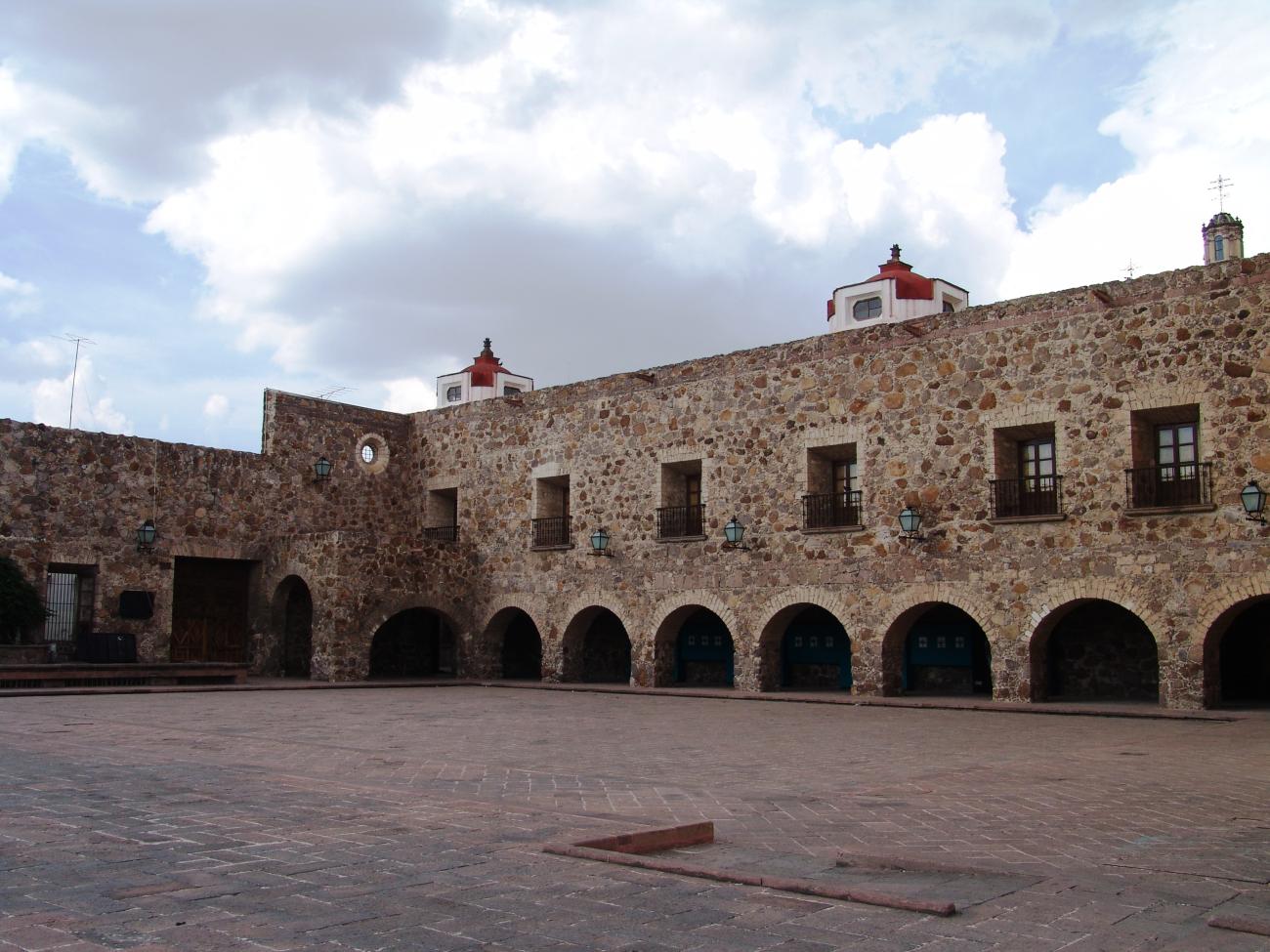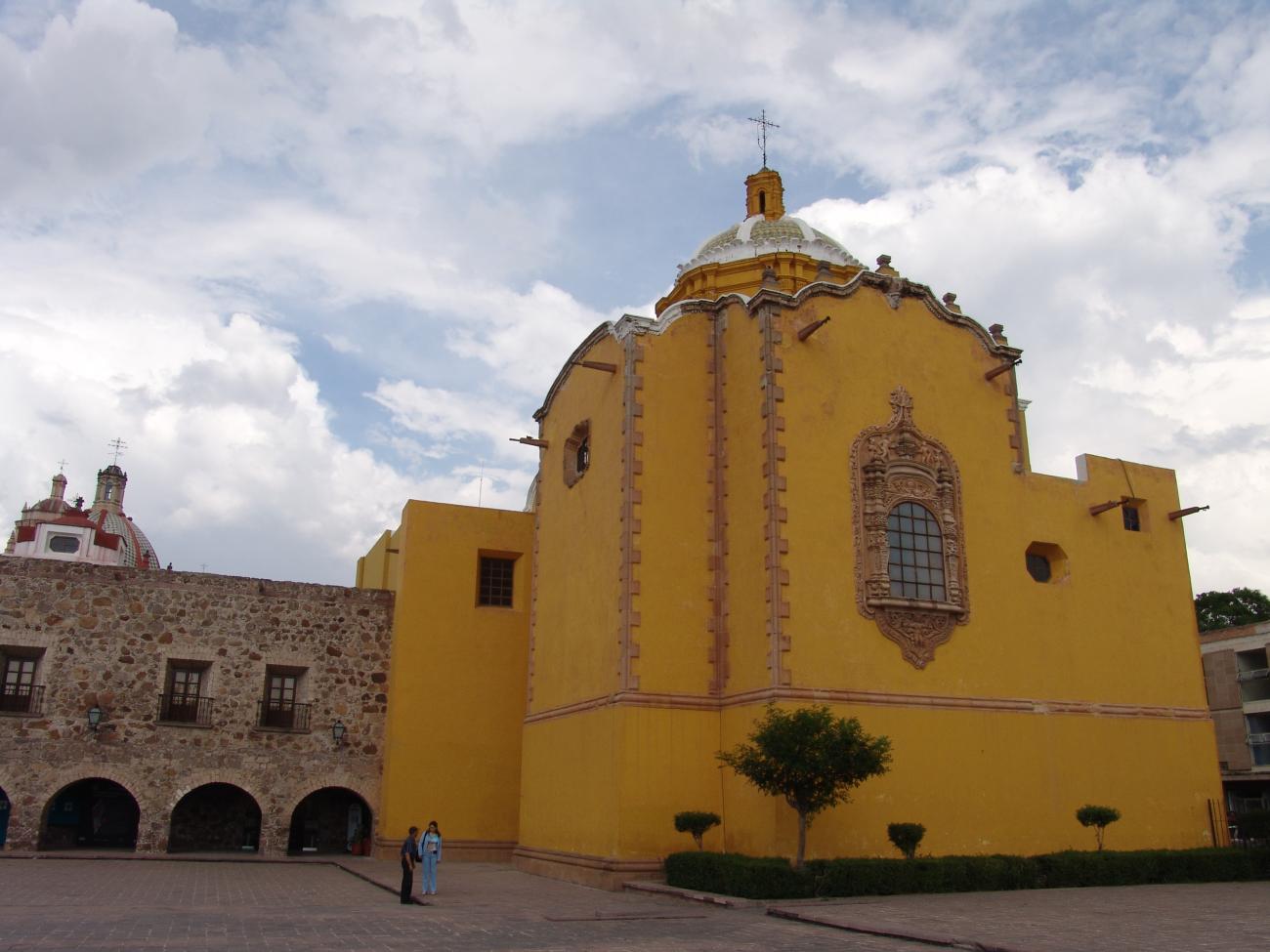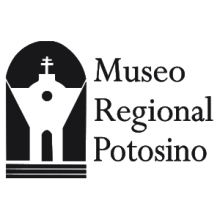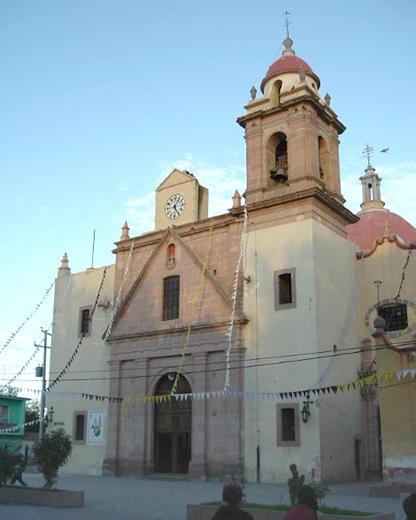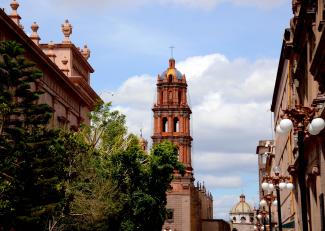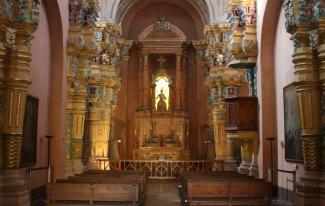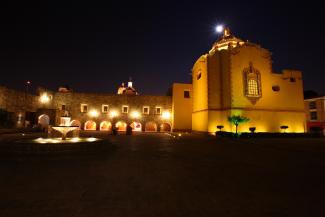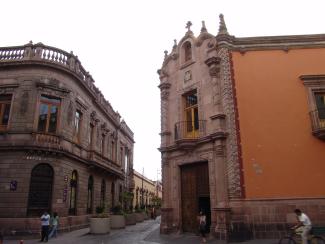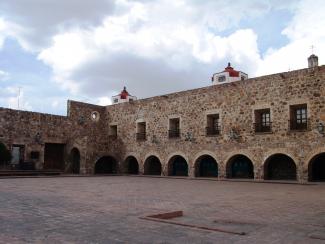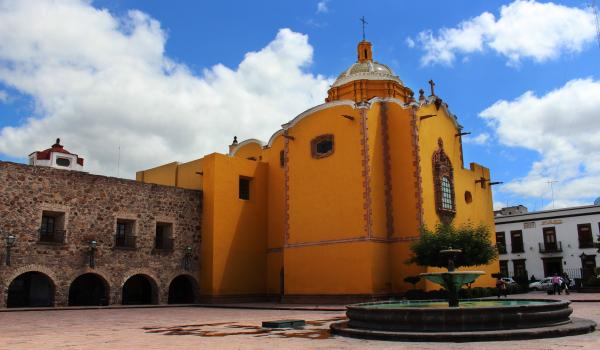San Luis Potosí
Historical Monuments Zone
Abstract
The grandeur of the city of San Luis Potosí derives from its importance as a center for gold and silver mining and as a frontier post for the route into the north of New Spain, which led to its recognition as a key part of the World Heritage cultural itinerary known as the Royal Inland Road or Camino Real de Tierra Adentro.
In its origins this city was a diverse ethnic settlement that brought together Tlaxcaltecas, Otomis, Purépechas, Guachichiles and Spaniards, and it is a significant example of cultural blending in this region of the country. It was founded in 1583, at the site where Friar Diego de la Magdalena had gathered groups of Guachichil indigenous peoples who had first arrived in the region in the 13th century.
San Luis Potosí owes its name to Louis IX, king of France. On 3 November 1592 it was founded as the Pueblo de San Luis Mesquitique; subsequently, on 30 May 1656, the Viceroy Francisco Fernández de la Cueva, Duke of Alburquerque, granted the Pueblo y Minas del Potosí the right to be established as a city. The name Mesquitique was changed to Potosí in reference to the wealth of the mines in the San Pedro mountains, comparable to the Potosí mines in Bolivia.
The first villages were settled over the 16th century, previously separate and now forming the city’s neighborhoods: Tlaxcalilla, Santiago and San Miguelito; to which were added San Sebastián, Tequisquiapan, Montecillo, San Juan de Guadalupe and Tenería in the 16th century, La Soledad in the 18th century and Saucito in the 19th century.
San Luis Potosí became the largest Intendencia of all New Spain, and by 1787 it encompassed the jurisdiction of the present-day states of San Luis Potosí, Tamaulipas, Nuevo León, Coahuila and Texas. It underwent extensive social, political and above all economic development to become the third-most important city in all the viceroyalty, behind only Mexico and Puebla.
In the 19th century, the city was a primordial player in the republican cause, leading President Benito Juárez to declare it the capital of the country in 1863 and again in 1867. On this second occasion, it was in the city hall that the death sentence of Ferdinand Maximilian von Habsburg was signed.
Thanks to its historical, political and cultural value, the city of San Luis Potosí was declared a Zone of Historical Monuments on 19 December 1990; the conservation perimeters A and B bound an area of 1.93 km2 comprising 218 city blocks with building constructed between the 16th and 19th centuries. Of these, 18 were intended for religious worship, including most notably the Cathedral of Nuestra Señora de la Concepción, the Antiguo Seminario Conciliar, the former monasteries and churches of San Francisco and San Agustín; the churches of Nuestra Señora del Rosario, San Juan de Dios, the Sagrario or the Compañía, Loreto, San Miguel Arcángel, El Carmen, San José, Espíritu Santo, Nuestra Señora de la Salud, San Sebastián and its annexes, and that of the Tercera Orden, together with the chapels of Aránzazu and Guadalupe.
Other historical buildings were intended for the purposes of public education, welfare, service and embellishment, or use by the civil and military authorities, including: the seat of government and city hall, the Royal Treasury, the La Paz Theater, the central university building, the monumental palace and the water tower.
In the year 2010, San Luis Potosí was enrolled as a UNESCO World Heritage Site.

Puente
19th-century building constructed of stone.

Estación San Luis Potosí (Antigua)
19th-century building, designed by architect Carlos J. S. Hall. It was built along the main line from Mexico to Laredo, Tamaulipas, constructed by the former Ferrocarril Nacional Mexicano; it connected the city of Zacatecas with San Luis Potosí.
Estación San Luis Potosí (Antigua)
19th-century building, designed by architect Carlos J. S. Hall. It was built along the main line from Mexico to Laredo, Tamaulipas, constructed by the former Ferrocarril Nacional Mexicano; it connected the city of Zacatecas with San Luis Potosí.
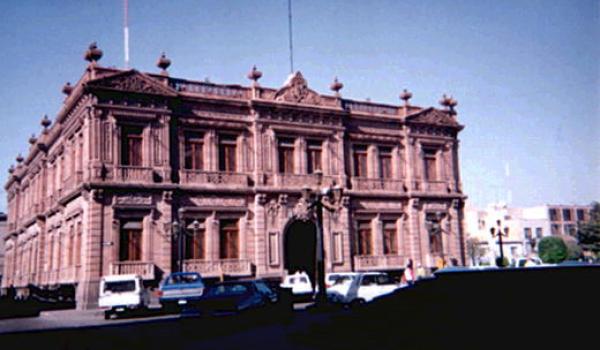
Museo de la Máscara
Building constructed in 1894 as the residence of Ramón Martí Pecho, it became federal property in 1903. In 1982, the northern façade was added, and the Museo de la Máscara was established. The rest of the building is used by the National Telegraphs.
Museo de la Máscara
Building constructed in 1894 as the residence of Ramón Martí Pecho, it became federal property in 1903. In 1982, the northern façade was added, and the Museo de la Máscara was established. The rest of the building is used by the National Telegraphs. Its rooms and corridors are adorned with paintings and woodwork by the Italian artists Mollina and Compeani.
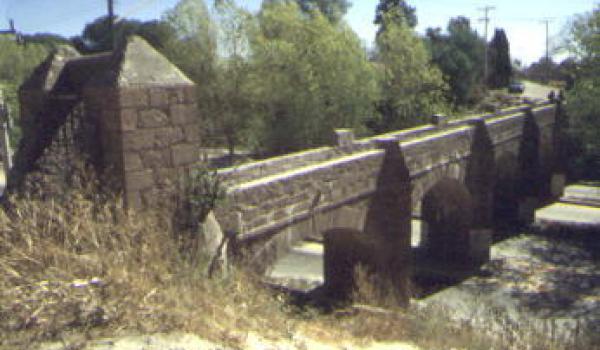
Puente de Pedraza
19th-century building.

Santuario del Señor de Burgos
Religious building from the 19th century. It was constructed between 1880 and 1955 due to the need for a larger temple than the old chapel. It is now used as a museum and houses a collection of ex-votos dedicated to the Señor de Burgos or Señor del Saucito.
Santuario del Señor de Burgos
Religious building from the 19th century. It was constructed between 1880 and 1955 due to the need for a larger temple than the old chapel. It is now used as a museum and houses a collection of ex-votos dedicated to the Señor de Burgos or Señor del Saucito.

Edificio Presidente Juárez
18th-century building. It has had various owners until it was acquired by the State Government in 1970.
Edificio Presidente Juárez
18th-century building. It has had various owners until it was acquired by the State Government in 1970.
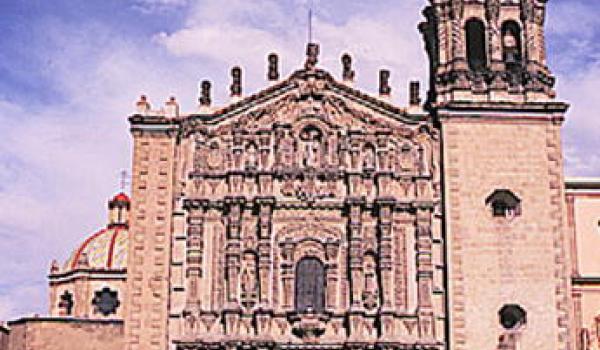
Templo del Carmen
The Carmelites arrived in the city of San Luis Potosí in 1743. On January 29, 1749, the foundation of the temple began under the direction of Fray Juan de los Reyes. The temple was completed on September 15, 1763, and that same year, both the temple and the convent were consecrated.
Templo del Carmen
The Carmelites arrived in the city of San Luis Potosí in 1743. On January 29, 1749, the foundation of the temple began under the direction of Fray Juan de los Reyes. The temple was completed on September 15, 1763, and that same year, both the temple and the convent were consecrated.
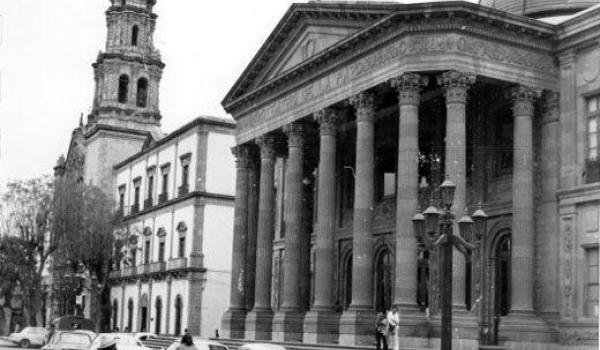
Teatro de la Paz
Building from the 19th century. Part of the former Carmelite Convent was demolished for its construction. On September 16, 1889, construction began with the design by architect José Noriega, and it was inaugurated on December 4, 1894.
Teatro de la Paz
Building from the 19th century. Part of the former Carmelite Convent was demolished for its construction. On September 16, 1889, construction began with the design by architect José Noriega, and it was inaugurated on December 4, 1894.

Templo de San Agustín
18th-century building belonging to the Augustinians, who arrived in San Luis Potosí in 1592. On October 13, 1603, a royal decree was issued allowing the Augustinians to erect their monastery, which was completed in 1613.
Templo de San Agustín
18th-century building belonging to the Augustinians, who arrived in San Luis Potosí in 1592. On October 13, 1603, a royal decree was issued allowing the Augustinians to erect their monastery, which was completed in 1613.
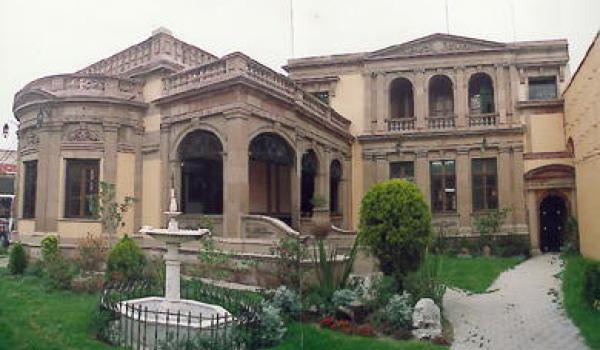
Secretaría de Turismo
19th-century building. It currently serves as DIF Metropolitano.

Escuela Ildefonso Díaz de León
19th-century building. It currently houses the Federico Silva Museum.
Escuela Ildefonso Díaz de León
19th-century building. It currently houses the Federico Silva Museum.
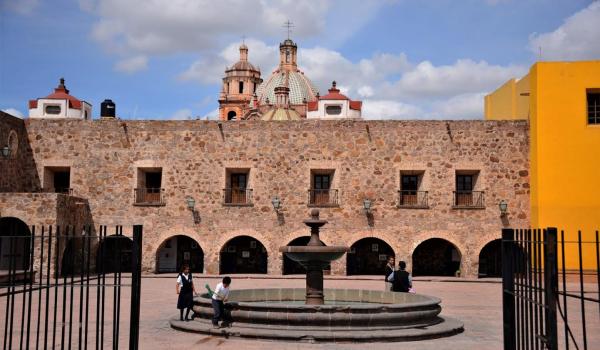
Convento de San Francisco
17th-century building. Records indicate that between 1748 and 1749 it underwent renovations, which included the construction of the choir area, offices, sacristy, anteroom, and the Aranzazú chapel.
Convento de San Francisco
17th-century building. Records indicate that between 1748 and 1749 it underwent renovations, which included the construction of the choir area, offices, sacristy, anteroom, and the Aranzazú chapel.
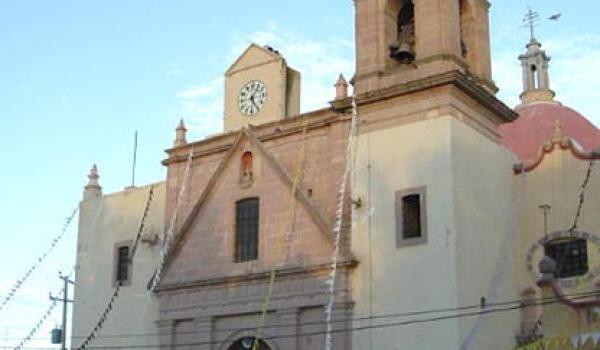
San Francisco de Asís
18th-century building, with an inscription on the western face of the bell tower that reads "Enero 26 de 1848".
San Francisco de Asís
18th-century building, with an inscription on the western face of the bell tower that reads "Enero 26 de 1848".

